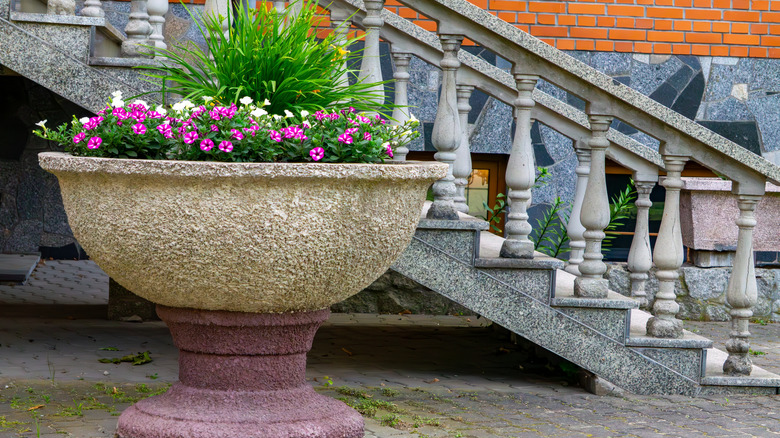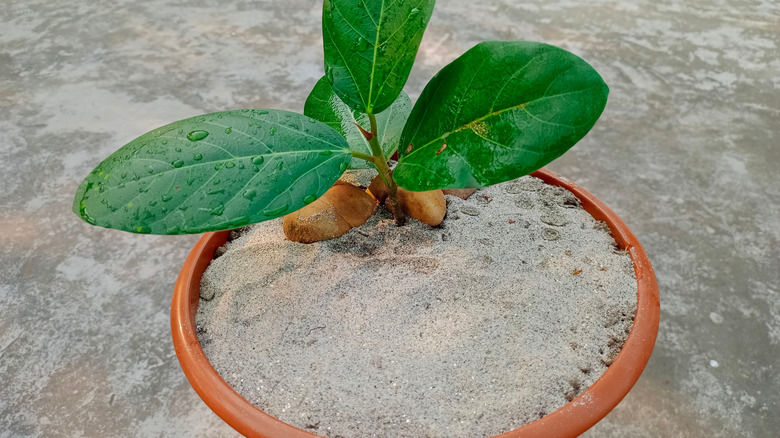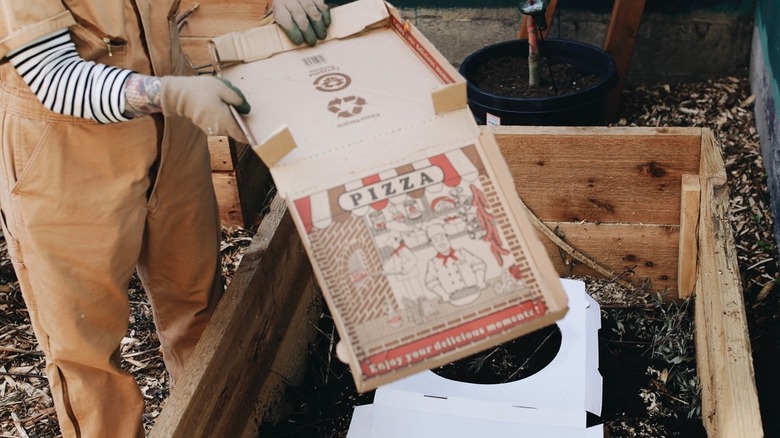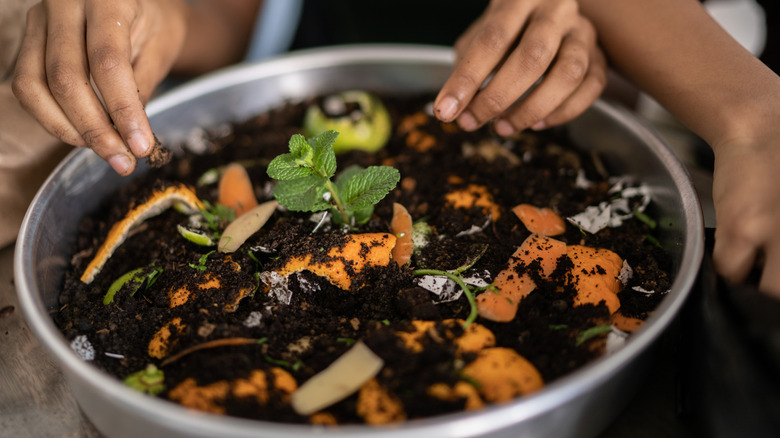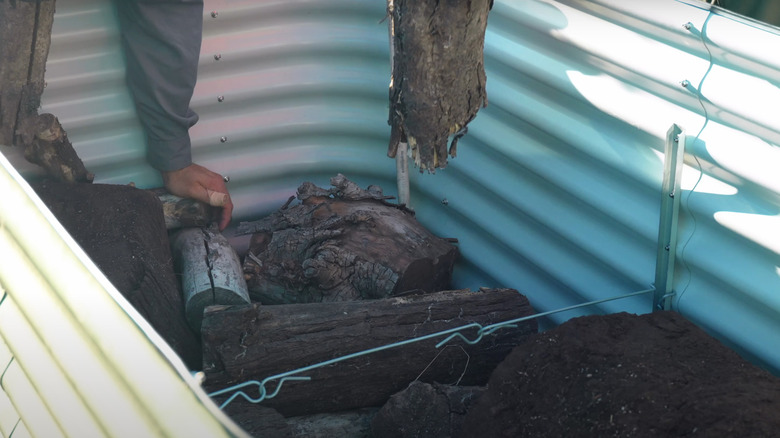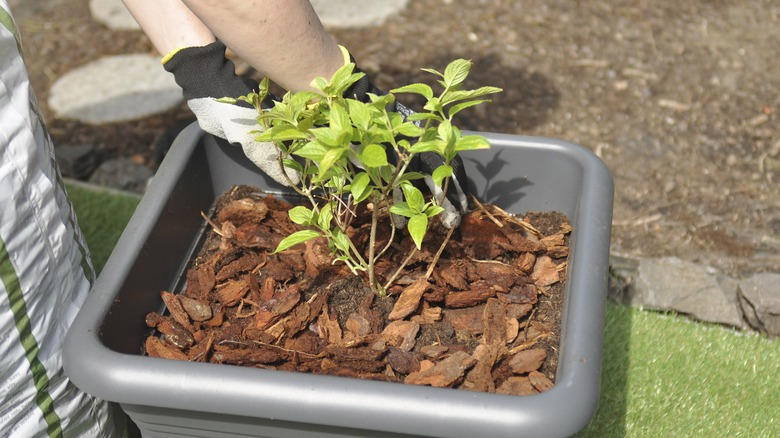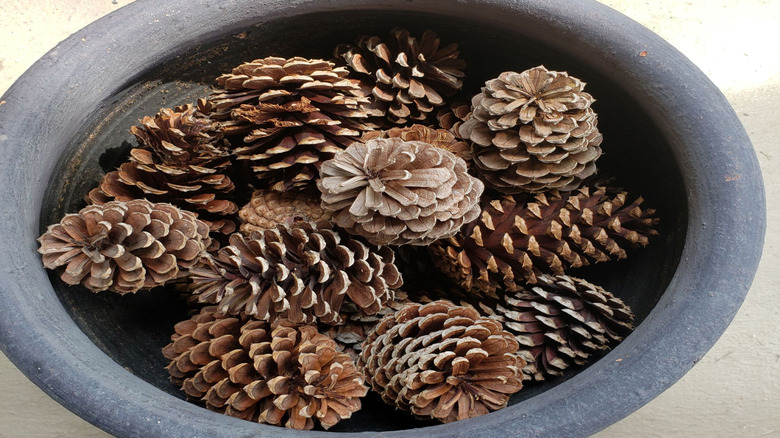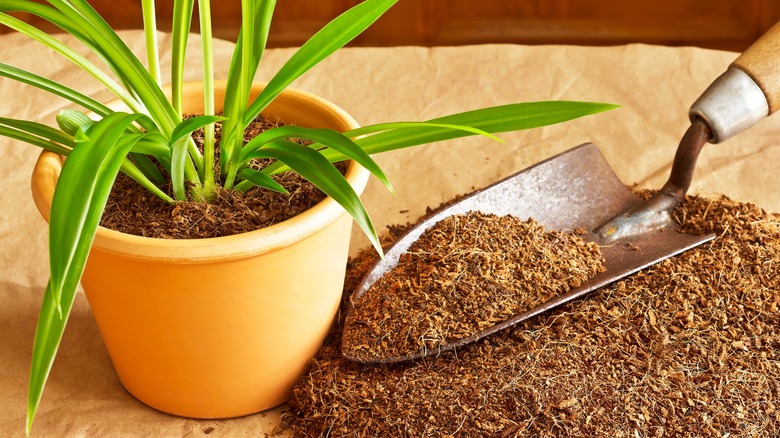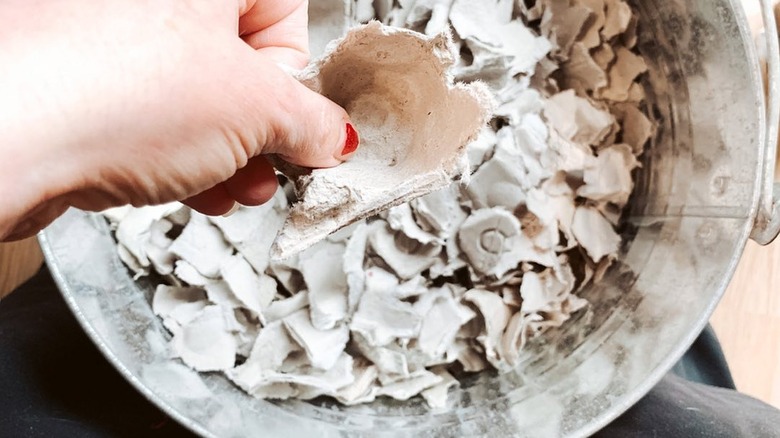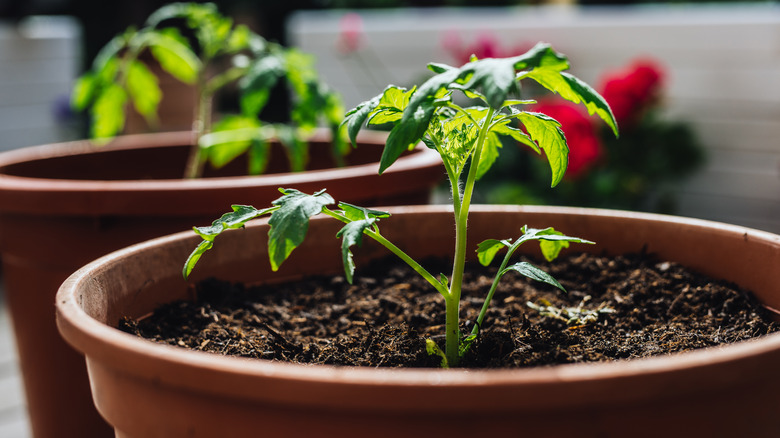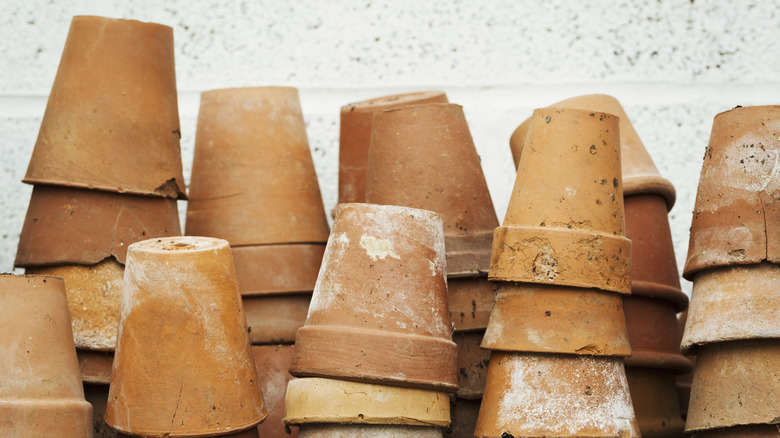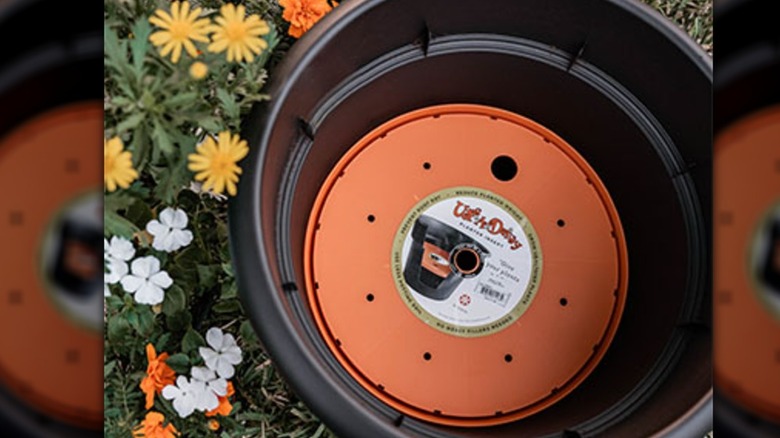The 13 Best Materials You Should Be Using To Fill The Bottom Of Large Planters
Large plant pots are adorable, but not always practical. Sure, they can hold a tree or a bush, but sometimes you want them for a few flowers. In these cases, you're left with a lot of empty space that the roots of your plants will never touch. You may be thinking it's a waste to fill the whole thing with dirt, which means you're probably wondering what to put in its place.
There are a lot of options available to choose from. Unfortunately, some materials you should never use to fill the bottom of large planters are regularly recommended. These include plastic products, like water bottles, jugs, and pool noodles. Additionally, heavy, non-porous items like stones should also be avoided. These materials can hurt your plants and lead to issues with waterlogging and drainage. Thankfully, you can still use other readily available materials that are safe for plants.
The best material to fill the bottom of large planters depends a lot on the type of plants you're growing in the planter. If you want to plant something with an expansive root system, for example, you want to add well-draining, nutrient-rich materials like soil, compost, or peanut shells to the bottom of the pot. If you just thought the plant looked neat in your large planter, but it won't need that much space for its roots, you can reduce the amount of dirt you use by adding other items like planters, pinecones, or even logs.
Peanut Shells
Crushed peanut shells are a lightweight and natural way to fill up a plant pot. They are great for water retention and are ideal for breaking up compact soil. Ensure not to use salted shells, as the salt content can harm plants, the soil, and beneficial microorganisms. The downside of peanut shells is that they don't take up much space, so you will need quite a few to fill up a large pot. This might not be a problem, but for most people, you'll probably want to mix it with other items to fill the space.
Sand
Sand is an option, though you may have to avoid it for a plant pot you're hoping to move soon. However, if you are looking for a sturdy pot that won't budge for anything, and you don't want to use a lot of soil, sand can come in handy. It helps with drainage, so you don't have water sitting at the bottom of your pot. Just make sure that you get bags without any salt or lime in them.
Cardboard
Go for undyed, brown cardboard for the best effect. Glossy layers or colored dyes have the potential to contain dangerous chemicals that could be bad for your soil or plants. However, black dyes are fine. Peel off all labels and tape before placing chunks of cardboard at the bottom of your plant pot. Keep in mind that this material degrades pretty quickly, so it is best for annual plants or those you'll need to repot within a year or so. Otherwise, you'll be adding more dirt down the line as the cardboard composts.
Newspapers
Like cardboard, newspaper will break down over time, so stick to putting it at the bottom of pots you're going to be emptying out within the year. Additionally, while all normal newspaper dyes are considered safe, even the colored ones, avoid the glossy pages you often see in magazines and ads. To maximize your space and to stop the dirt from immediately weighing down the paper, crumple up pages into balls before layering them at the bottom of your planter. Don't be afraid to fill up your pot with dirt afterward, as the weight will compress some of the newspaper.
Compost
Compost is generally a little lighter than soil and may not drain as well as potting mix, but it can be another great addition. Over time, the compost will break down, adding nutrients to your soil. Don't just add this healthy mixture to the bottom of your pot, but go ahead and mix some of it into the rest of the soil. It's pretty easy to make your own DIY compost at home using your leftovers, which helps to reduce the amount of trash you have lying around while also helping your plants.
Sticks or branches
While this can be a great option, you do have to be careful. Certain plants can reproduce from just a bit of a branch, and take over a pot. Additionally, if you don't cure the wood, then all sorts of parasites and fungi can cause huge problems for the plant in the large pot. Use only sticks you know are safe, and make sure you take time to bake/sterilize any wood you plan to use at the bottom. After a few years, the sticks and branches will decay, so you'll have to replace them eventually.
Mulch
Mulch is another way to add filler to the bottom of the pot. You don't need to go and buy fancy stuff either. Use broken-up wood chips you have around your yard if you have some. It works similarly to using logs and sticks, but is a little more manageable, and you can buy it in a store if you don't have a lot of trees and bushes around. No matter what form of wood you choose to use, try to avoid colored or pressure-treated types, as the chemicals can leach nutrients from the soil and cause some issues.
Pinecones
Pinecones are a great natural way to take up space. They don't only help with drainage, but can also be a way to reduce the amount of potting soil you need to fill up the pot, therefore saving you some money. These are just a few reasons why you should start adding pinecones to the bottoms of your planters. If you live somewhere with a lot of pines, it's an incredibly easy option to prevent them from lying around your yard and getting in the way.
Coco Coir
Coconut coir doesn't take up much space, but it is another alternative to dirt. Additionally, it won't compact as easily and allows for air pockets, which is why it may be a good idea to place it in the bottom of a heavy pot. Coconut coir holds water, so your plants won't be waterlogged, but can go longer between waterings. Additionally, this material is cheap, considering all you have to do is add a bit of water to one of the dense bricks, and you get more than enough to fill up most pot sizes.
Egg cartons
Egg cartons are incredibly useful for a gardener, from acting as the perfect-sized seed starters to being the primary material for a DIY that makes planting seeds in the garden quick and easy. However, they also work to fill up space in a large plant pot. Just break the cartons into big pieces and place them at the bottom. They help soak up water, which makes them useful for drainage. These cartons also decompose rather quickly, so they are better for annual plants, or for something that is going to grow and take up all the space in the pot at some point.
More Dirt
If you have a large plant or something that will grow pretty big over time, there's no need to try and fill the space with random materials. Just use dirt for the entire pot. That way, your plant has plenty of space to grow. If you want, you don't need to use a potting mix. You can amend normal store-bought bags to improve the lives of your plants without spending top dollar on expensive soils. There are lots of materials you could use for soil amendment, depending on your plant's needs, including peat moss, coffee grounds, or wood ash.
Other pots
Another idea is to put a pot at the bottom of your planter. You can put the second, smaller pot into the planter upside down, reducing the space taken up by potting soil. This is a great way to use old planters you own and don't want to toss, but don't know how to repurpose, either. Terracotta pots are some of the best options, as they can absorb the extra water and release it as the soil dries.
Pot inserts
Another great option is plant pot inserts. These are made with the sole purpose of reducing the weight and amount of soil you need in your plant pots. Ups-a-Daisy is a great example. You can look around on their website and figure out the exact size and shape you need to fit them easily into your pot. Many of them also come with drainage holes, so you don't have to worry about your plants becoming waterlogged. For really big pots, though, you might need to put something else underneath to support the insert.
